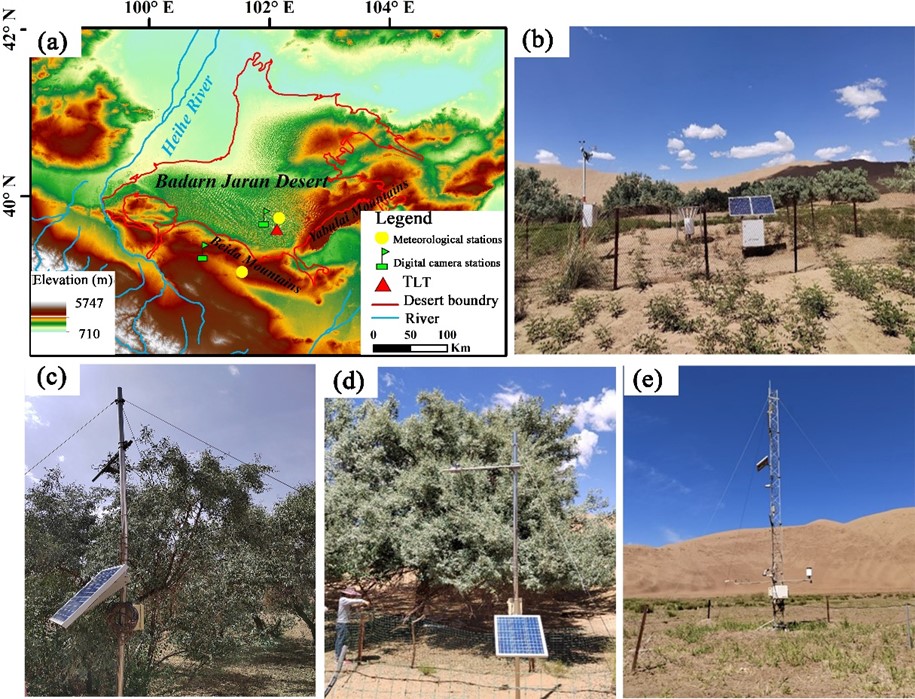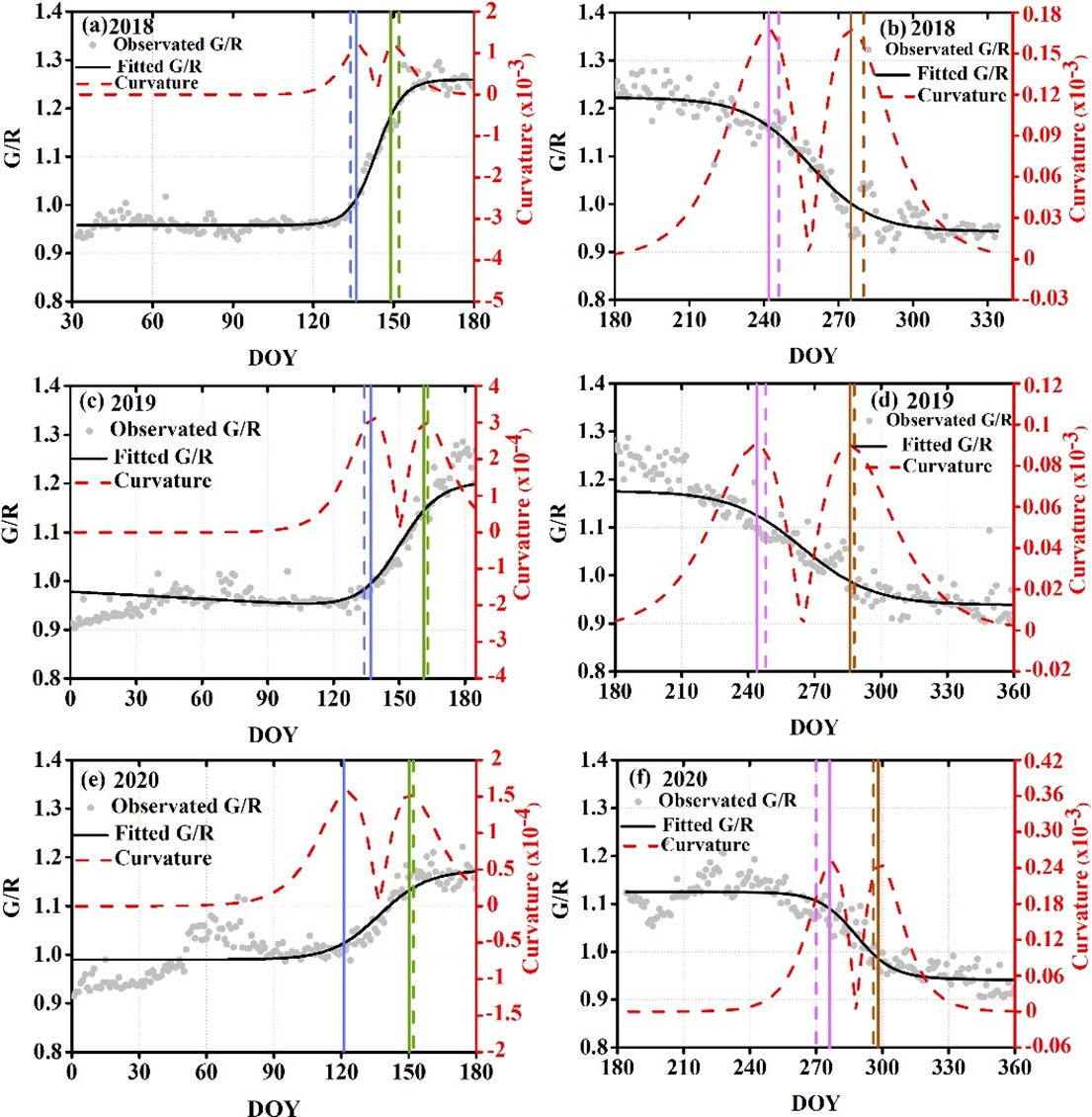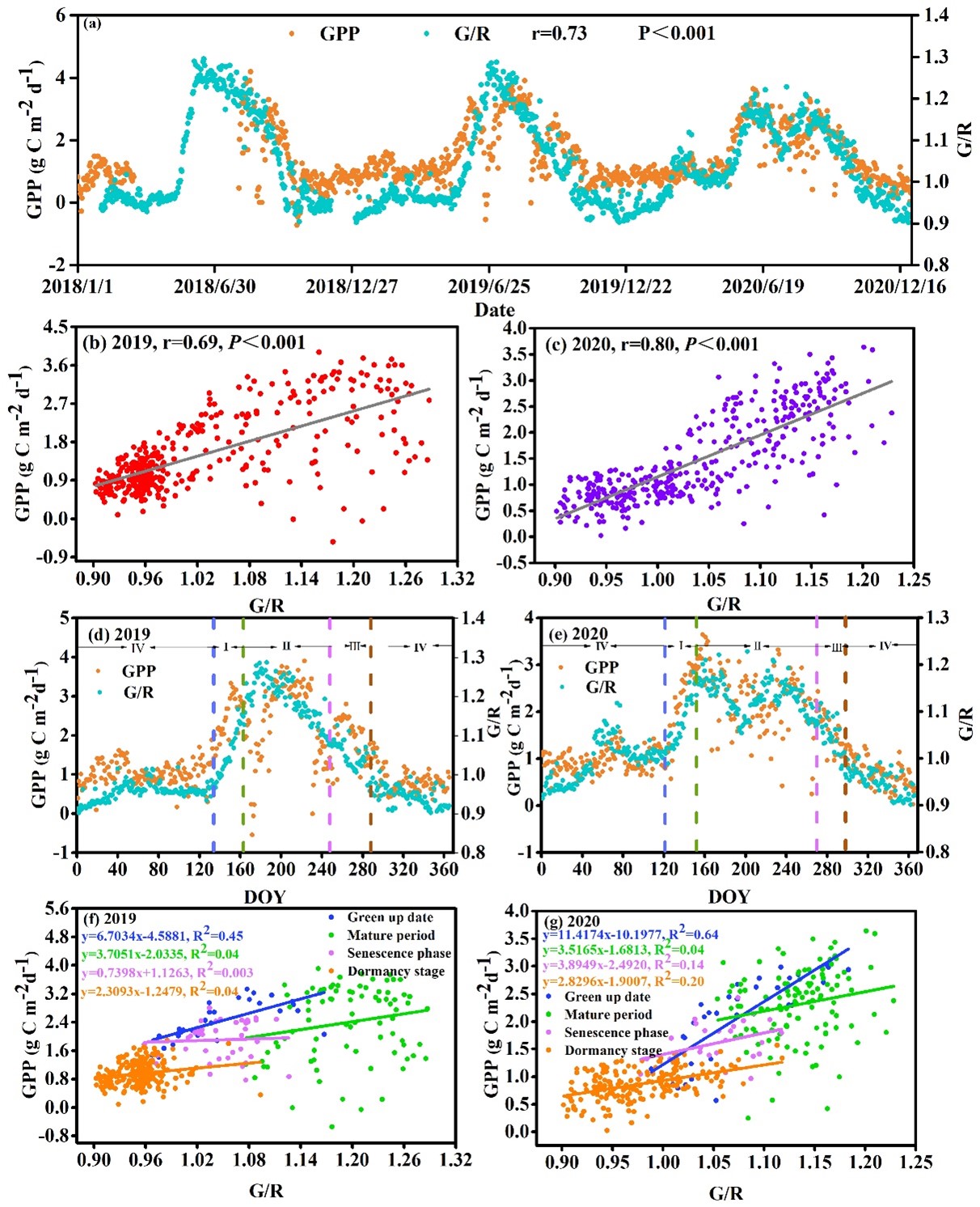Recently, Meng Nan, a Ph.D. candidate (Class of 2021) in Earth System Science at the School of Earth and Environmental Sciences, Lanzhou University, published a research article titled"Using digital camera and eddy covariance data to track vegetation phenology and carbon dioxide fluxes in the Badain Jaran Desert"in the internationally renowned journalJournal of Geophysical Research: Biogeosciences. The study was supported by the General Program of the National Natural Science Foundation of China (Grant No. 42271131) and the Fundamental Research Funds for the Central Universities (Grant No. lzujbky-2023-it07). Meng Nan is the first author of the paper, with Professor Wang Nai'ang as the corresponding author.

As research on the carbon cycle in Earth systems deepens, the focus of frontier scientific problems has shifted from quantifying the global patterns of oceanic and terrestrial carbon sources and sinks to investigating the pathways and spatiotemporal variations of carbon budgets in various underlying surfaces or typical ecosystems. Vegetation phenology not only provides a direct indication of seasonal growth changes but also affects water, energy, and carbon exchange processes between the land surface and the atmosphere through phenological shifts. It is regarded as the "language" of nature and the "fingerprint" of global change.

Using the oasis forest and grassland ecosystems in the Badain Jaran Desert as a case study, this research extracted phenological parameters based on high spatiotemporal resolution digital camera imagery. The study combined these parameters with micrometeorological observation data to explore the key meteorological factors influencing vegetation index changes. Finally, carbon flux data obtained using the eddy covariance technique were analyzed to reveal the relationship between the ecosystem's gross primary production (GPP) and vegetation indices.
The results indicate that:
Phenological periods derived from digital camera images exhibit minimal error (≤6 days) compared to manual visual observations, demonstrating that digital cameras are effective in capturing the phenology of desert vegetation.
Temperature is the primary factor influencing vegetation growth, while precipitation acts as a "trigger" during the greening process of vegetation communities.
Vegetation indices and GPP are strongly correlated, particularly during the greening period, with the peak of GPP in summer (June–August) lagging approximately one month behind the peak of vegetation indices.
These findings enhance our understanding of the response of vegetation phenology to climate change and its pivotal role in the carbon cycle, providing a scientific basis for ecological and environmental protection in this region.
